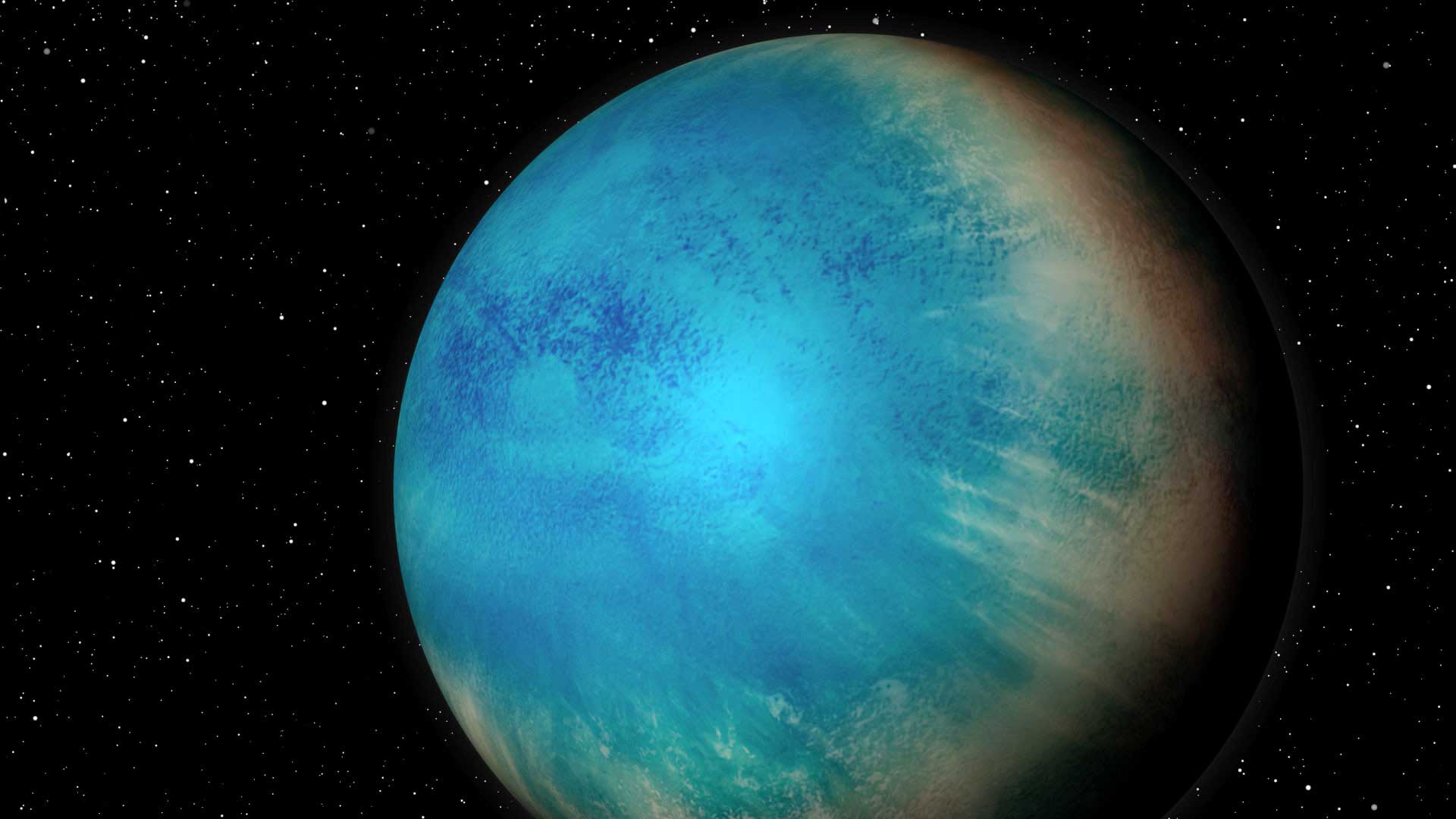A group of astronomers from the University of Montreal have discovered an exoplanet—a planet outside of our solar system—that could be described, in layman’s terms, as a ‘water world.’ The planet, dubbed TOI-1452b, appears to be covered entirely by ocean, and scientists are now hoping to book the new James Webb Space Telescope soon, to further analyze the planet’s atmosphere.
TOI-1452b is part of a binary star system approximately 100 light years from Earth and sits in the so-called ‘Goldilocks zone,’ the habitable range in which it is neither too hot nor too cold for liquid water to exist on its surface. The planet was first discovered by NASA’s Transiting Exoplanet Survey Satellite (TESS) space telescope before the astronomers conducted further observations from a telescope on the ground to confirm the data.
The newly discovered planet is described as a ‘super-Earth’ at 1.672 times the size of the Earth. But while Earth’s surface is 70% covered by water, our planet consists mostly of rock and metal, with water accounting for less than 1% of its total mass. TOI-1452b, however, is of a much lower density than earth and consists of up to 30% of water, similar to some of the moons in our own solar system, such as Ganymede and Callisto of Jupiter, and Saturn’s moons Titan and Enceladus.
Scientists are excited about the discovery, as ocean plants are considered to be strong candidates for originating and sustaining forms of life. One of the astronomers, Charles Cadieux, said that “TOI-1452b is one of the best candidates for an ocean planet that we have found to date. Its radius and mass suggest a much lower density than what one would expect for a planet that is basically made up of metal and rock, like Earth.”
After publishing their initial findings in The Astronomical Journal, the scientists are now biding their time for a turn at the James Webb Space Telescope. TOI-1452b is not only close enough to Earth to study its atmosphere, but also located in a region of the sky that allows observation throughout the year.






